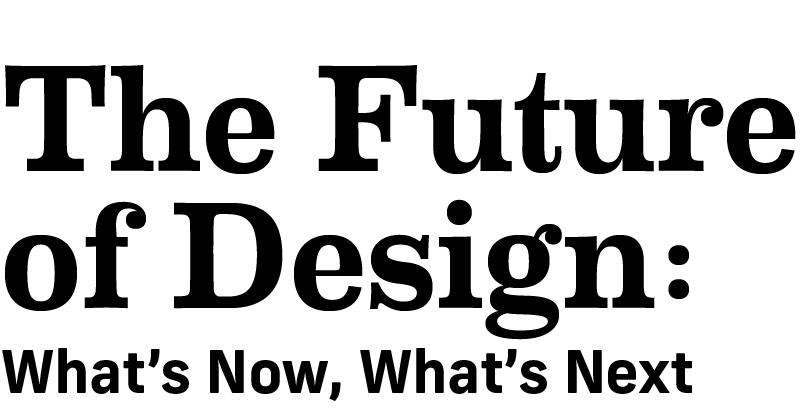A 23-member jury of industry professionals, including architects, interior designers, providers, consultants, and researchers, was charged with sifting through the 59 projects submitted to this year’s EFA Design Showcase, determining which ones made the cut to be published and which ones rose to the top and earned awards. Most importantly, they offered their unique perspectives.
It’s a multidisciplinary approach that adds dimension to the judging process and provides the opportunity to recognize projects’ merits in a much richer way.
So we asked them how they approached this task from their individual spots within senior living design and what they took away from the work they reviewed. Below, read exerpts of what they each had to say and click on the links to read their full responses.
Architect
Mike McKay, AIA, ACHE, EDAC, LEED AP
Senior architect, Erdman (Madison, Wis.)
EFA has structured the format to encourage entrants to tell us their story, but to do so in a manner that features innovation, collaboration, quality of life, operations, and functionality of the design solution. What I want to find in the submission is the evidence of those traits. The evidence is made clear when the narrative clearly presents the goals and objectives of the project, the relevant research and evidence that support the design concept, the metrics by which success will be measured, and the outcomes from post-occupancy evaluations on those metrics. It’s made much stronger when the supporting drawings and images bring those elements and that part of the story to life.
To read Michael McKay's full response, click here.
Consultant (business)
CC Andrews
President and chief strategist, Quantum Age Collaborative (Cleveland)
I was particularly interested to see how each project responded to the needs and opportunities presented by the greater community it served. I was looking for projects that went beyond the standard models of skilled nursing, short-stay rehab, assisted living, or independent living—and combinations thereof. Were there new ways to blend services or settings to offer something uniquely tailored to a specific marketplace? Did design teams anticipate future changes in demand and design with flexibility of services (and spaces) in mind, so that providers can be agile and responsive to change?
To read CC Andrews' full response, click here.
Interior designer
Maria Lopez, NCIDQ, AAHID
Principal, Maria Lopez Interiors (Stevenson, Md.)
I was most impressed with projects where the master planning, exterior architecture, interior architecture, and interior finishes maintained a consistent aesthetic while still providing interest and variety. There were many positive elements in most projects that required considerable study of the submissions to appreciate. I was very impressed with the overall effort made in space planning. The ability to make sense of a plan and provide connectivity to related and adjacent spaces, as well as allowing an opportunity for intuitive wayfinding was an excellent starting point. Plans made an effort to include views to nature and daylighting, while encouraging movement and interaction. There was openness in many submissions that encouraged residents to move through the spaces to enjoy the variety of activities or opportunities.
To read Maria Lopez's full response, click here.
Engineer
Rafi Wartan, PE, LEED AP BD+C
Principal/division director, TLC Engineering for Architecture (Jacksonville, Fla.)
I viewed the innovation and operational performance criteria as an opportunity for projects to showcase their process and final selection of the overall design and, more specifically, the systems used or at least considered. A number of the submitted projects did just that. It was obvious that the benefit of daylighting is being recognized, as a number of the projects were harnessing daylighting in their design. Some of the projects did a great job in marrying natural daylight with illumination from electrical fixtures. Reading about projects that evaluated engineering innovations, such as geothermal solutions, was also very impressive. We also came across projects that are pursuing LEED certification, which showed the importance of operational performance and sustainability.
To read Rafi Wartan's full response, click here.
Provider
Lori Alford
Chief operating officer, Avanti Senior Living (The Woodlands, Texas)
When reviewing the submissions, I looked for three key things: (1) resident experience, (2) visitor (family, vendors, etc.) experience, and (3) operational efficiencies and staff experience. At the end of the day, we do what we do to serve seniors, to give them a wonderful community and services that they deserve. In order to achieve this, we have to learn from the past, make improvements, and be OK with change for the right reasons. We have to be mindful of residents’ ailments yet aware that senior housing doesn’t have to be boring. I looked for how this thought was implemented.
To read Lori Alford's full response, click here.
Occupational therapist
Amy Wagenfeld, PhD, OTR/L, SCEM
Assistant professor, department of occupational therapy, Rush University (Chicago)
I looked for evidence of universal design features; for me, accessibility isn’t enough. Features that I appreciated included ample spaces for wheelchairs to sit alongside standard seating; carpeting that wouldn’t pose a trip or fall hazard for residents with visual, perceptual, and balance challenges; zero-threshold showers; storage spaces that were equally usable from sitting or standing positions; lighting that didn’t produce glare; kitchens that provided equitable spaces for residents to sit and to stand while cooking or hanging out; outdoor spaces with pathways wide enough to accommodate two wheelchairs in tandem, to name a few.
To read Amy Wagenfeld's full response, click here.
Consultant (codes and regulations)
Skip Gregory, NCARB
President, Health Facility Consulting LLC (Tallahassee, Fla.)
When I review designs, I still look for the fire safety and building code requirements, but I also determine whether the design itself is in harmony with the principals of humanizing environments advocated by SAGE. As an “enlightened” former regulator, I am interested in how well the description fits the plans and photographs of the project. Because I was trained in the visual arts, I always look at the drawings and photos first to get an overall idea of the project. Then I read the copy to judge how well the written intentions match the actual outcome.
To read Skip Gregory's full response, click here.
Jennifer Kovacs Silvis is executive editor of Environments for Aging. She can be reached at [email protected].
For more on the EFA Design Showcase, see the following:









